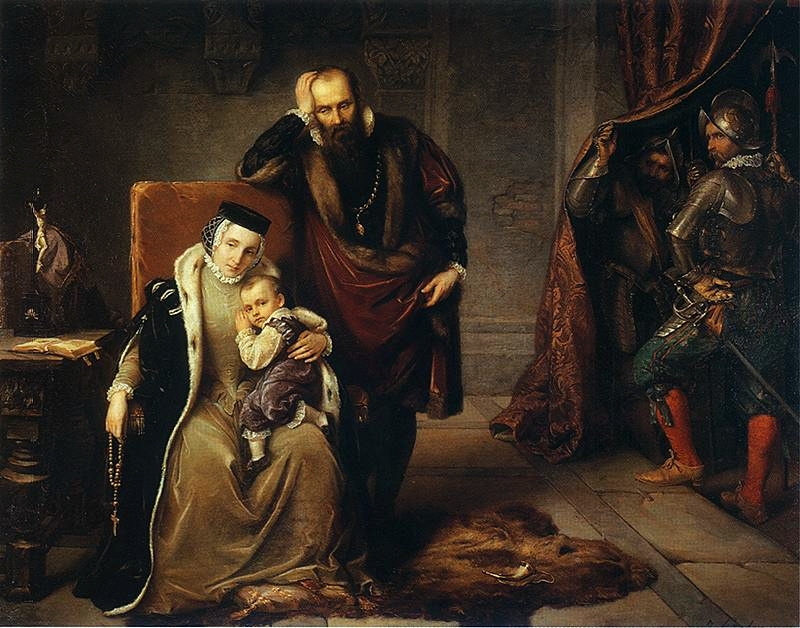|
Stegeborg
Stegeborg Castle is a ruined castle in St Anna parish, Söderköping, Östergötland, located on an island in a narrow sound at the bay of Slätbaken, Sweden. Brief history The oldest part of the castle is a square brick tower in the southeast corner, built in the early 13th century, when Söderköping became a city. A simple fortified residence was added during the 14th century, expanded and supplemented by a wall and a round tower in the west. During the 16th and 17th centuries the building was further expanded, especially during the reign of John III of Sweden, when the round tower attained its present height. In addition, a castle church was added to the north wing. Several of the Vasa kings lived in Stegeborg, which was allotted 1652–1689 to the Palatine counts John Casimir (died 1652) and Adolph John. The crown sold the castle in the 1730s for building materials. The bottom floor's large masonry protected it against complete destruction. Until 1689 the castle was th ... [...More Info...] [...Related Items...] OR: [Wikipedia] [Google] [Baidu] |
Adolph John I, Count Palatine Of Kleeburg
Adolph John I (; ; 11 October 1629 – 14 October 1689) was Count Palatine of Kleeburg from 1654 until 1689 and was considered Prince of Sweden until 1660. He was the younger brother of King Charles X Gustav of Sweden. Life Adolph John was born in Stegeborg Castle, Sweden (now in Söderköping Municipality) in 1629 as the youngest son of John Casimir, Count Palatine of Kleeburg and Princess Catherine of Sweden. He was Duke of StegeborgPage on dukes aTacitus.nu after his elder brother Carl Gustav became the King of Sweden. At that time, he also obtained the County Palatine of Kleeburg.Michel Huberty, Alain Giraud, F. and B. Magdelaine. L'Allemagne Dynastique, Tome IV, ''Wittelsbach''. (1985). pp.83–84,108–109, 144–145 In early 1659, he was a part of the Swedish offensive into Ducal Prussia, which led to initial Swedish gains but were lost after an allied counteroffensive in March. Marriage Adolph John married Countess Elizabeth Beatrice Brahe (31 August 1629 – 7 S ... [...More Info...] [...Related Items...] OR: [Wikipedia] [Google] [Baidu] |
John Casimir, Count Palatine Of Kleeburg
John Casimir, Count Palatine of Zweibrücken-Kleeburg (20 April 1589, Zweibrücken – 18 June 1652, Stegeborg Castle) was the son of John I, Count Palatine of Zweibrücken and his wife, Duchess Magdalene of Jülich-Cleves-Berg. He was married to Catherine of Sweden and was the founder of a branch of Wittelsbach Counts Palatine often called the ''Swedish line'', because it gave rise to three subsequent kings of Sweden,Michel Huberty, Alain Giraud, F. and B. Magdelaine. L'Allemagne Dynastique, Tome IV, ''Wittelsbach''. (1985). pp.83-84,108-109, 144-145 but more commonly known as the Kleeburg (or Cleebourg) line. In 1591 his father stipulated that, as the youngest son, John Casimir would receive as appanage the countship of Neukastell in the Palatinate. Upon their father's death in 1611, however, the eldest son, John II, Count Palatine of Zweibrucken, instead signed a compromise with John Casimir whereby the latter received only the castle at Neukastell coupled with an ... [...More Info...] [...Related Items...] OR: [Wikipedia] [Google] [Baidu] |
John III Of Sweden
John III (; 20 December 1537 – 17 November 1592) was King of Sweden from 1569 until his death. He attained the Swedish throne after a rebellion against his half-brother Erik XIV. He is mainly remembered for his attempts to close the gap between the newly established Lutheran Church of Sweden and the Catholic Church, as well as his conflict with and possible murder of his brother. John was also, quite autonomously, the Duke of Finland from 1556 to 1563. In 1581 he assumed the title Grand Duke of Finland. His first wife was Catherine Jagiellon of the Polish–Lithuanian ruling family, and their son Sigismund eventually ascended both the Polish–Lithuanian and Swedish thrones. He ended the Northern Seven Years' War, but instead Sweden was drawn into the 25 Years' War with Russia, where minor gains were eventually made. He worked for closer relations with Poland. John III was interested in religion and culture. During his reign, he countered the growing Lutheran tendencies ... [...More Info...] [...Related Items...] OR: [Wikipedia] [Google] [Baidu] |
House Of Vasa
The House of Vasa or Wasa was a Dynasty, royal house that was founded in 1523 in Sweden. Its members ruled the Kingdom of Sweden from 1523 to 1654 and the Polish–Lithuanian Commonwealth from 1587 to 1668. Its agnatic line became extinct with the death of King John II Casimir Vasa in 1672. The Vasa dynasty descended from a 14th-century Swedish noble family, tracing agnatic kinship to Nils Kettilsson (Vasa) (), the of Tre Kronor (castle), ''Tre Kronor'' Castle in Stockholm. Several members held high offices during the 15th century. In 1523, after the Stockholm Bloodbath, Stockholm bloodbath and the abolition of the Kalmar Union, Gustav Eriksson (Vasa) became King Gustav I of Sweden and the royal house was founded. His reign is sometimes referred to as the beginning of the modern Swedish state, which included the King's break with the Catholic Church during the Protestant Reformation and the foundation of the Church of Sweden. However, his eldest son and successor Erik XIV of Sw ... [...More Info...] [...Related Items...] OR: [Wikipedia] [Google] [Baidu] |
Birger, King Of Sweden
Birger Magnusson (1280 – 31 May 1321) was King of Sweden from 1290 to 1318. His reign was marked by unrest and civil strife; he was imprisoned by his brothers Erik and Valdemar following the " Håtuna games" in 1306, but when he tried to play them the same trick in Nyköping, there was an uprising that ended with Birger losing the crown and the execution of his 18-year-old son Magnus. Background Birger Magnusson was the son of King Magnus Ladulås and Helvig of Holstein. In order to secure the succession, King Magnus had Birger hailed king of Sweden when he was four years old. In 1275, Magnus had led a rebellion against his elder brother, King Valdemar, and ousted him from the throne. Before his death, Magnus ordered his kinsman, Torkel Knutsson, the Constable of the Realm, to be Birger's guardian. In 1302, Birger was crowned at Söderköping after marrying Martha of Denmark, the daughter of King Eric V of Denmark. Reign Birger was only ten years old when his father died, a ... [...More Info...] [...Related Items...] OR: [Wikipedia] [Google] [Baidu] |
Lars Albrektsson
Lars is a common male name in Scandinavian countries. Origin ''Lars'' means "from the city of Laurentum". Lars is derived from the Latin name Laurentius, which means "from Laurentum" or "crowned with laurel", and is therefore related to the name Laurence and Lauren. A homonymous Etruscan name was borne by several Etruscan kings, and later used as a last name by the Roman Lartia family. The etymology of the Etruscan name is unknown. Notable people *, bishop of Linköping (1236–1258) *, bishop of Linköping (1292–1307) *Lars (archbishop of Uppsala) (1255–1267) *Lars Kristian Abrahamsen (1855–1921), Norwegian politician *Lars Ahlfors (1907–1996), Finnish Fields Medal recipient *Lars Amble (1939–2015), Swedish actor and director *Lars Herminius Aquilinus, ancient Roman consul *Lars Bak (born 1980), Danish road bicycle racer *Lars Bak (computer programmer) (born 1965), Danish computer programmer *Lars Beckman (born 1967), Swedish politician *Lars Bender (born 1989), Germ ... [...More Info...] [...Related Items...] OR: [Wikipedia] [Google] [Baidu] |
Marshal
Marshal is a term used in several official titles in various branches of society. As marshals became trusted members of the courts of Middle Ages, Medieval Europe, the title grew in reputation. During the last few centuries, it has been used for elevated offices, such as in military rank and civilian law enforcement. In most countries, the rank of Field marshal, Marshal is the highest Army rank (equivalent to a five-star General of the Army (United States), General of the Army in the United States). Etymology ''Marshal'' is an ancient loanword from Old French ''mareschal'' (cf. Modern French ''maréchal''), which in turn is borrowed from Old Frankish *' "stable boy, keeper, servant", attested by Medieval Latin ''mariscalcus'' from a Proto-Germanic ''*maraχskalkaz'' (cf. Old High German ''marahschalh'')p. 93b-283a, T. F. Hoad, ''The Concise Oxford Dictionary of English Etymology'' (Oxford University Press, 1993) being still evident in Middle Dutch ''maerscalc'', ''marscal'', ... [...More Info...] [...Related Items...] OR: [Wikipedia] [Google] [Baidu] |
Torkel Knutsson
Torkel (Tyrgils or Torgils) Knutsson (died 1306) was Lord High Constable of Sweden, member of the Privy Council of Sweden (''Riksråd''), and virtual ruler of Sweden during the early reign of King Birger Magnusson (1280–1321). Biography Torkel hailed from an old noble family of West Geatish ancestry and was related to the House of Bjälbo (''Folkungaätten''). He was first mentioned in 1282. In documents from 1288, he is mentioned as a knight and a member of the privy council (''Riksråd''). Career Before his death, King Magnus Ladulås ( 1290) ordered his kinsman, Torkel Knutsson, the Constable of the Realm, to be the guardian of his son Birger. When King Magnus Ladulås died, Torkel became regent for the underage Birger Magnusson (1280–1321). When Tavastland had been attacked by the Republic of Novgorod, in 1292, Torkel led the Third Swedish Crusade against Novgorod, in 1293 and conquered parts of Karelia, where he founded the stronghold of Vyborg Castle. In 129 ... [...More Info...] [...Related Items...] OR: [Wikipedia] [Google] [Baidu] |
List Of Bishops Of Linköping
A list is a set of discrete items of information collected and set forth in some format for utility, entertainment, or other purposes. A list may be memorialized in any number of ways, including existing only in the mind of the list-maker, but lists are frequently written down on paper, or maintained electronically. Lists are "most frequently a tool", and "one does not ''read'' but only ''uses'' a list: one looks up the relevant information in it, but usually does not need to deal with it as a whole".Lucie Doležalová,The Potential and Limitations of Studying Lists, in Lucie Doležalová, ed., ''The Charm of a List: From the Sumerians to Computerised Data Processing'' (2009). Purpose It has been observed that, with a few exceptions, "the scholarship on lists remains fragmented". David Wallechinsky, a co-author of ''The Book of Lists'', described the attraction of lists as being "because we live in an era of overstimulation, especially in terms of information, and lists help us ... [...More Info...] [...Related Items...] OR: [Wikipedia] [Google] [Baidu] |
Isostatic Rebound
Post-glacial rebound (also called isostatic rebound or crustal rebound) is the rise of land masses after the removal of the huge weight of ice sheets during the last glacial period, which had caused isostatic depression. Post-glacial rebound and isostatic depression are phases of glacial isostasy (glacial isostatic adjustment, glacioisostasy), the deformation of the Earth's crust in response to changes in ice mass distribution. The direct raising effects of post-glacial rebound are readily apparent in parts of Northern Eurasia, Northern America, Patagonia, and Antarctica. However, through the processes of ''ocean siphoning'' and ''continental levering'', the effects of post-glacial rebound on sea level are felt globally far from the locations of current and former ice sheets.Milne, G.A., and J.X. Mitrovica (2008) ''Searching for eustasy in deglacial sea-level histories.'' Quaternary Science Reviews. 27:2292–2302. Overview During the last glacial period, much of northern ... [...More Info...] [...Related Items...] OR: [Wikipedia] [Google] [Baidu] |





